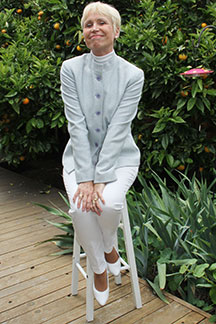Alte Liebe isn’t just a feeling of deep affection, passion or strong liking for a person. In Cuxhaven, Germany, the “Alte Liebe” is also a well-known two-story wooden pier and breakwater at the bank of the Elbe River. It was originally constructed in 1733 as a bulwark against the loss of coastal land into the Elbe and to secure the harbor. Over the years, the Alte Liebe has been renewed and improved several times. While the jetty rested on wooden poles in the olden days, concrete posts have replaced them in modern times. Today, the Alte Liebe still serves as a dock for small ships and ferries that transport passengers to the islands of Neuwerk http://www.walled-in-berlin.com/j-elke-ertle/neuwerk-worth-a-staycation/ and Helgoland and to the nearby seal banks in the Elbe estuary. In addition, the pier is a popular viewing platform where visitors observe the giant container ships navigate down the Elbe River.
Four Legends surrounding the Alte Liebe
There are at least four folktales surrounding the Alte Liebe. http://www.cuxhaven-seiten.de/alte_liebe/alte_liebe.htm According to German author, Gorch Fock, an old sailing ship by the name of Olivia used to serve as a dock prior to the construction of the Alte Liebe. The pier’s name changed over time from “Olivia” to “‘Olive” to “o Leev” and finally to the high German “Alte Liebe.”
According to another story, the French sailing ship Olive ran aground on this spot in the 18th century. Its hull first served as an anchor bridge, but when it broke apart, a rampart was formed from the wreckage. Common parlance turned the ship’s name Olive into Alte Liebe.
Another legend has it that three old ships sank in this spot in 1733. One of the ships was called Die Liebe (The Love). To create a protective bulwark from the wreckage, wooden posts were used to surround the three ships, and the spaces were filled with rocks. According to this story the three ships became the foundation of the Alte Liebe.
The last explanation is the most romantic one. It is based on the ill-fated love between a Cuxhaven sailor and his sweetheart. According to the saga, Lorenz and Else were in love since their youth. Their parents did not allow them to marry for many years. After 15 long years of waiting for permission to marry, both mothers finally agreed to the marriage. A few months later, Lorenz had to go back to sea for six months. On the day of his expected return, Else went to the beach to watch for his ship. Finally, Lorenz appeared at the bow and waved. Suddenly, a strong gust washed him overboard. Out of despair, Else threw herself into the sea. In her memory, the pier is called “Old Love.”
For a sneak peek at the first 20+ pages of my memoir, Walled-In: A West Berlin Girl’s Journey to Freedom, click “Download a free excerpt” on my home page and feel free to follow my blog about anything German: historic and current events, people, places and food.
Walled-In is my story of growing up in Berlin during the Cold War. Juxtaposing the events that engulfed Berlin during the Berlin Blockade, the Berlin Airlift, the Berlin Wall and Kennedy’s Berlin visit with the struggle against my equally insurmountable parental walls, Walled-In is about freedom vs. conformity, conflict vs. harmony, domination vs. submission, loyalty vs. betrayal.



















